 |
THE ACCOUNTING EQUATION |
| << Sample Accounts of a Company |
| types of vouchers, Carrying forward the balance of an account >> |

Financial
Accounting (Mgt-101)
VU
Lesson-12
THE
ACCOUNTING EQUATION
Resources
in the business = Resources
supplied by the
owner
In
accounting, terms are used
to describe things. The amount of
resources supplied by the owner is
called
capital. The
actual resources which are
in the business are called
assets. This
means that the
accounting
equation
above, when the owner has supplied all
the resources, can be shown
as:
Assets=Capital
Usually,
people, other than the owner
has supplied some of the assets.
Liabilities
are
the name given to the
amounts
owing to these people for
these assets. The equation
has now changed
to:
Assets=Capital
+ Liabilities
It can
be seen that two sides of
the equation will have the same
totals. This is because we are
dealing with
the
same thing with two
different points of view. It
is:
Resources
in the business = Resources:
who supplied them
Assets
= Capital + Liabilities
It is a
fact that total of each
side will always equal
one another, and this will
always be true no matter
how
many
transactions there may be.
The actual assets, capital
and liabilities may change,
but the total of the
assets
will always equal to the
total of capital and
liabilities.
Assets
consist of property of all kinds,
such as buildings, machinery, stocks of
goods and motor
vehicles.
Also
benefits such as debts owned by customers
and the amount of money in the bank
accounts are
included.
Liabilities
consist of money owing for
goods supplied to the business and
for expenses. Also loans
made to
the
firm are included.
Capital is
often called the owner's net
worth.
Working
capital
Working
capital of the business is the net value
of current assets & current
liabilities.
Current
assets are
the resources of the business that
are expected to be received
within 12 months in an
accounting
period.
Current
liabilities are
the amount owing to the business that is
expected to be paid within one
year in a
financial
year.
So,
working capital is the net of what is
receivable in an accounting year &
what is payable in that year
or:
Working
Capital = Current Assets
Current Liabilities
For
instance, current assets of the business
worth Rs.100,000 & current
liabilities of the business has
the
value
of Rs. 75,000. Then working
capital is Rs.
25,000.
i.e.,
(100,000-75,000).
83
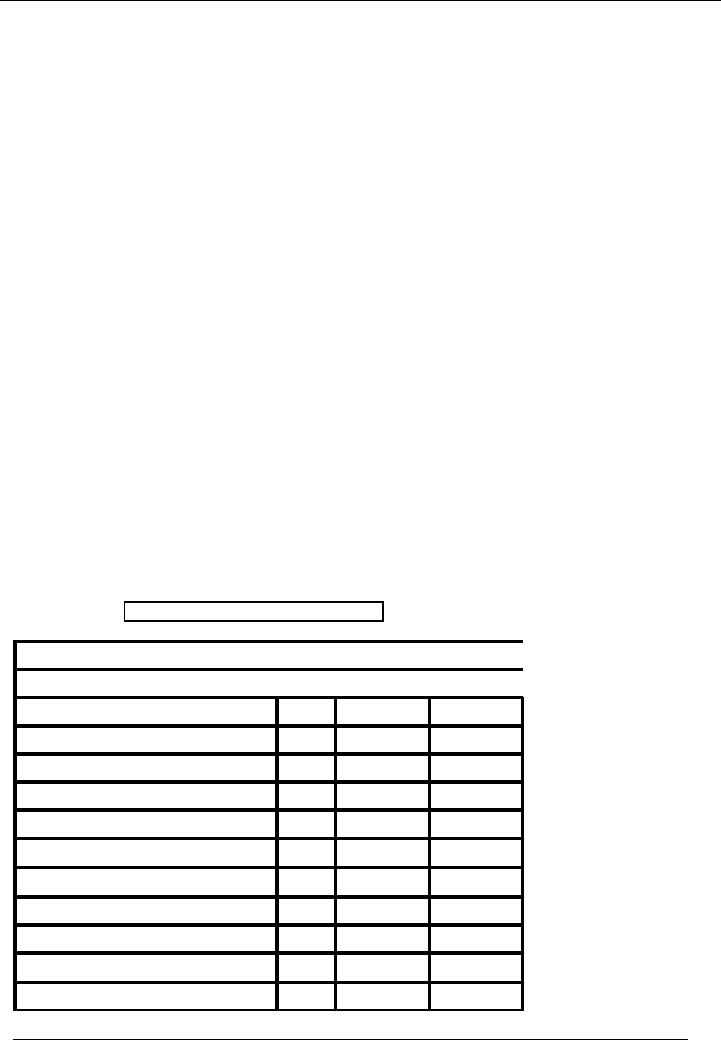
Financial
Accounting (Mgt-101)
VU
STOCK
Stock
is termed as "value of goods
available to the business that
are ready for sale".
For accounting
purposes,
stock is of two
types:
· Opening
stock
· Closing
stock
Opening
stock is the
value of goods available for
sale in the beginning of an accounting
year. For purpose
of financial
reporting, opening stock is
added to the purchases for the
year to become a part of cost
of
goods
sold. As this is
available in the beginning of the year, it is
assumed that it will be
consumed in the
accounting
year. That is why; it becomes a
part of cost
of goods sold.
Stock of previous year is the
opening
stock
in present year.
Closing
stock is the
value of goods unsold at the end of
accounting year. For
purposes of making financial
statements,
it is deducted from cost of
goods sold & is shown as an
asset in the balance
sheet. As this is
the
value
of goods that are yet to be
sold, so it cannot be included in cost of
goods sold. That is why it
is
deducted
from cost of good sold. On
the other hand, its benefit
will be received in the next
accounting year,
so it is
shown as an asset in the balance
sheet.
Now,
the
contents of cost of goods
sold are:
Opening
stock
Plus:
purchases
Plus:
Freight/ carriage paid on
purchases
Less:
closing stock
For
instance, opening stock of a
business worth Rs. 15,000,
business purchased goods of
Rs. 12,000 for the
year
& also paid Rs. 1,500 as
carriage on purchases. The
value of closing stock at the
end of the year is
Rs.
10,000.
Then, value of closing stock
is calculated as under:
Opening
stock
15,000
Add:
purchases
12,000
Add:
carriage on purchase
1,500
Less:
closing stock
(10,000)
Cost
of goods sold
18,500
Ali
Traders
Trial
Balance As On January 31,
20--
Title
of Account
Code
Dr.
Rs.
Cr.
Rs.
Cash
Account
01
35,000
Bank
Account
02
130,000
Capital
Account
03
200,000
Furniture
Account
04
15,000
Vehicle
Account
05
50,000
Purchases
Account
06
60,000
Mr. A
(Creditor)
07
15,000
Sales
08
95,000
Mr. B
(Debtor)
09
15,000
Salaries
10
5,000
84
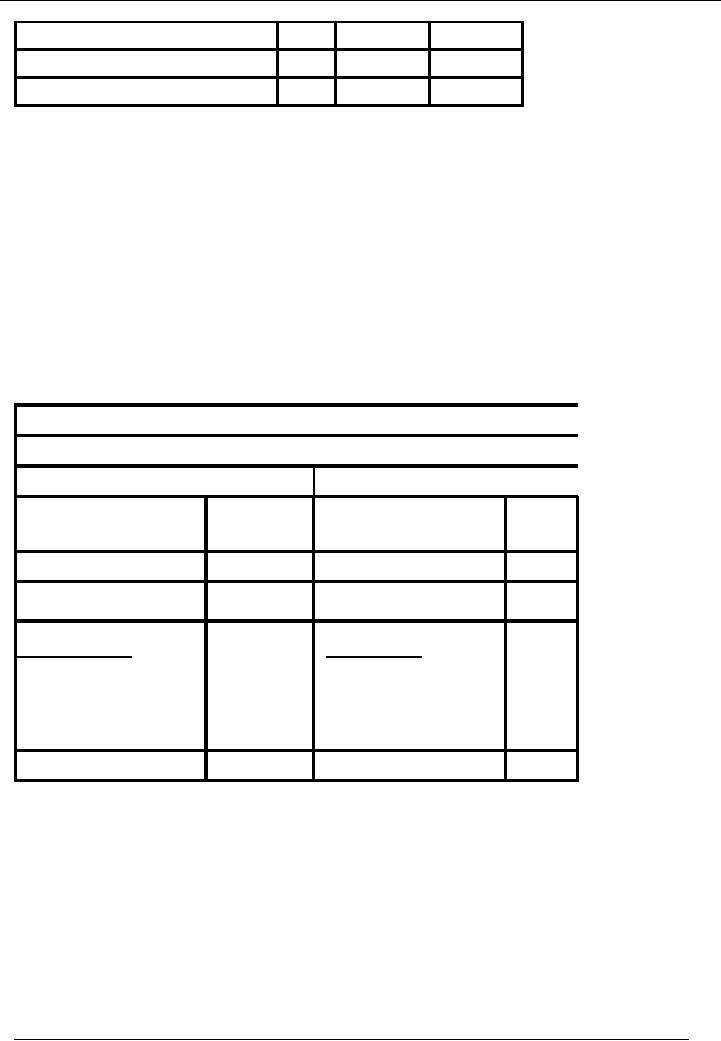
Financial
Accounting (Mgt-101)
VU
Expenses
11
20,000
Expenses
Payable
12
20,000
Total
330,000
330,000
The
Accounting Equation.
Assets
= Capital + Liabilities
Assets
= 35,000+130,000+15,000+50,000+15,000= 245,000
Capital =
200,000
Liabilities
= 15,000 + 20,000 =
35,000
Capital +
Liabilities = 235,000
We ignore the
Net Profit Rs.10000 (Net
profit is added in capital
account)
When
we added Net profit in
capital then;
Assets
= Capital + Liabilities
245000
= 210000+35000
245000
= 245000
Account
form Balance Sheet
Name of the
Entity (Ali traders)
Balance
Sheet As At (January 31,
20--)
Liabilities
Assets
Particulars
Amount
Rs.
Particulars
Amount
Rs.
Capital
200.000
Fixed Assets
65,000
Profit
and Loss Account
10,000
Furniture
15,000
50000
210,000
Vehicle
Current
Liabilities
Current
Assets
Mr.
A
15,000
Mr.
B
15,000
Exp.
payable
20,000
35,000
Bank
130,000
180,000
Cash
35,000
Total
245,000
Total
245,000
85
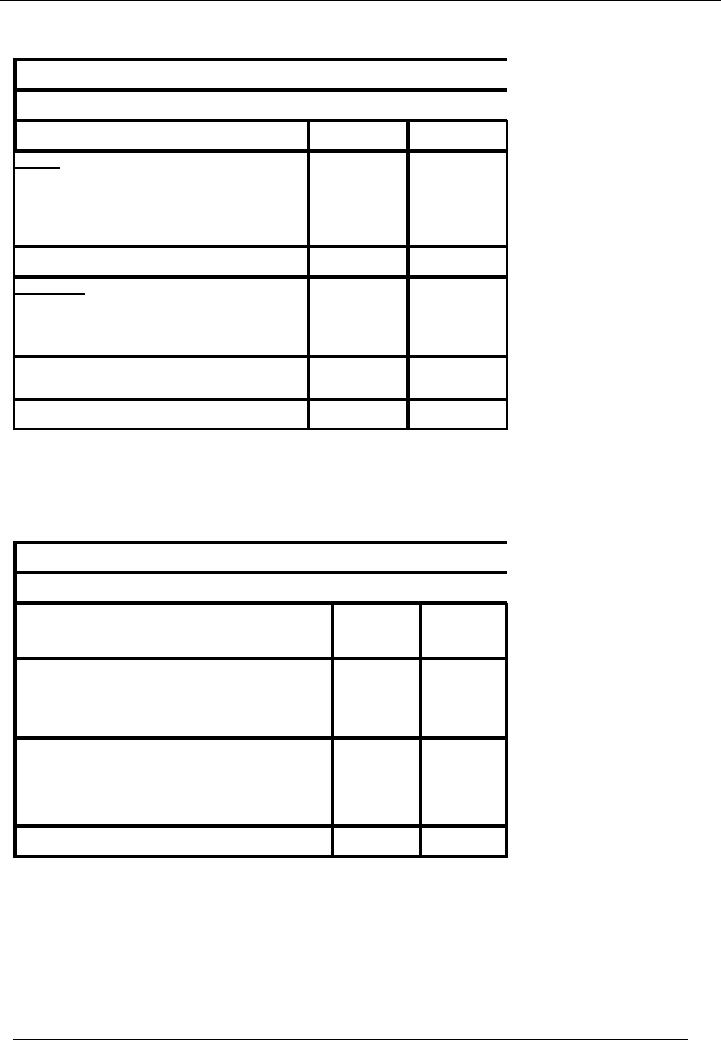
Financial
Accounting (Mgt-101)
VU
Report
form Balance Sheet
Ali
traders
Balance
Sheet As At January 31,
20--
Particulars
Amount
Rs.
Amount
Rs.
Assets
Fixed
Assets
65,000
Current
Assets
180,000
Total
245,000
Liabilities
Capital
200,000
Profit
and Loss Account
10,000
210,000
Current
Liabilities
35,000
Total
245,000
Treatment of
closing stock
If
closing stock is Rs.10000
then;
Name of the
Entity (Ali Traders)
Profit
and Loss Account for the
Month Ending January 31,
20--
Particulars
Amount
Amount
Rs.
Rs.
Income
/ Sales / Revenue
95,000
Less:
Cost of Goods Sold (
60,000 - 1,000 )
(59,000)
(59,000)
Gross
Profit
36,000
Less:
Administrative Expenses
(25,000)
(25,000)
Net
Profit
11,000
86
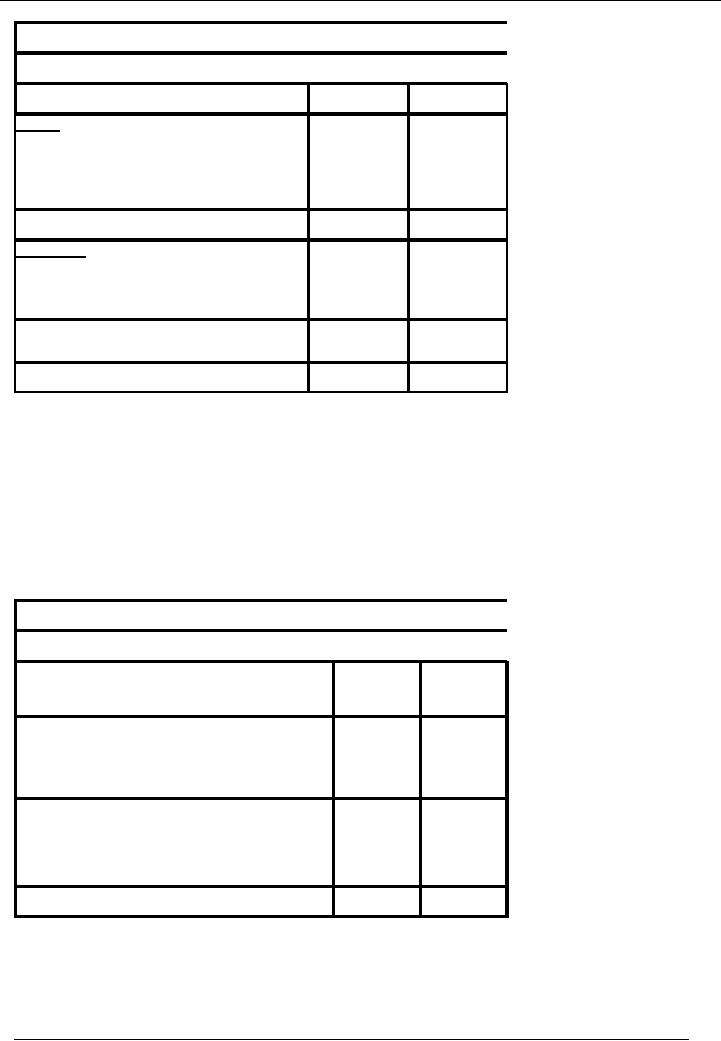
Financial
Accounting (Mgt-101)
VU
Ali
traders
Balance
Sheet As At January 31,
20--
Particulars
Amount
Rs.
Amount
Rs.
Assets
Fixed
Assets
65,000
Current
Assets (180,000
+ 1,000)
181,000
Total
246,000
Liabilities
Capital
200,000
Profit
and Loss Account
11,000
210,000
Current
Liabilities
35,000
Total
246,000
Treatment of
Depreciation
In
Profit and Loss Account it
is considered as expense and in
Balance Sheet it is deducted
from the
concerned
asset.
If
useful life of an asset is 50
month and considered that
there is no residual value
then,
·
Dividing
total cost by life of the
asset.
·
Rs.65,000
/ 50 months = Rs.1,300 monthly
charge
Name of the
Entity (Ali Traders)
Profit
and Loss Account for the
Month Ending January 31,
20--
Particulars
Amount
Amount
Rs.
Rs.
Income
/ Sales / Revenue
95,000
Less:
Cost of Goods Sold (
60,000-1,000 )
59,000
(59,000)
Gross
Profit
36,000
Less:
Administrative Expenses
25,000
Depreciation
1,300
(26,300)
Net
Profit
9,700
87
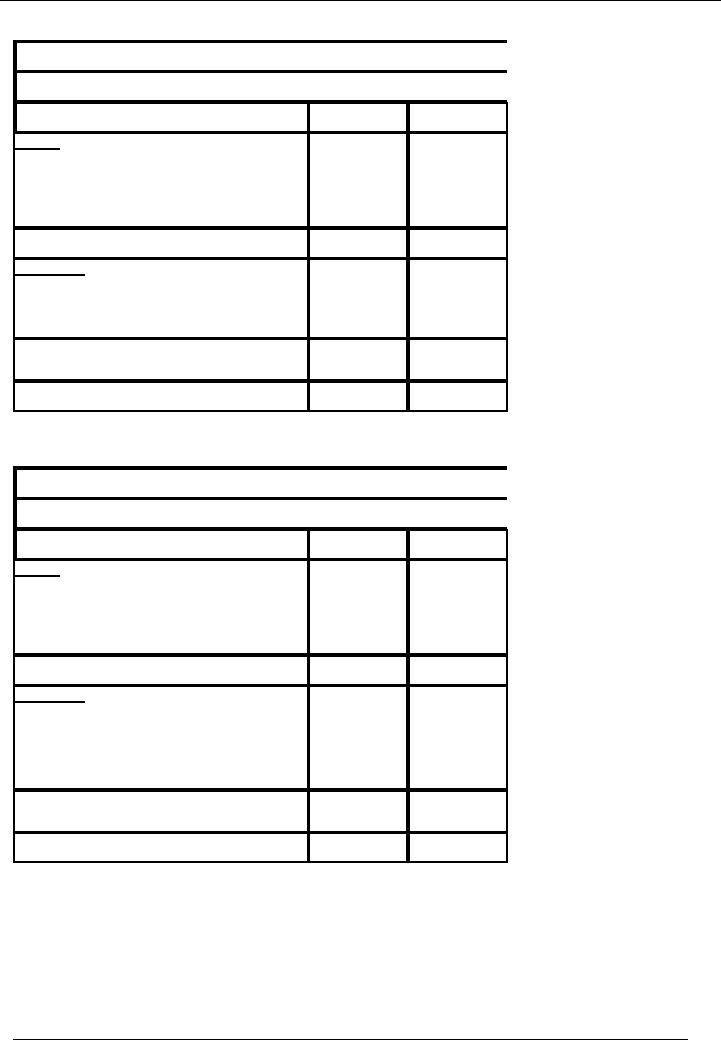
Financial
Accounting (Mgt-101)
VU
Ali
traders
Balance
Sheet As At January 31,
20--
Particulars
Amount
Rs.
Amount
Rs.
Assets
Fixed
Assets (65,000
1,300)
63,700
Current
Assets (180,000 +
1,000)
181,000
Total
244,700
Liabilities
Capital
200,000
Profit
and Loss Account
9,700
209,700
Current
Liabilities
35,000
Total
244,700
Distribution
of Profits / Drawing
Ali
traders
Balance
Sheet As At January 31,
20--
Particulars
Amount
Rs.
Amount
Rs.
Assets
Fixed
Assets (65,000
1300)
63,700
Current
Assets (181,000
- 5,000)
176,000
Total
239,700
Liabilities
Capital
200,000
Profit
and Loss Account
9,700
Drawing
(5,000)
204,700
Current
Liabilities
35,000
Total
239,700
88
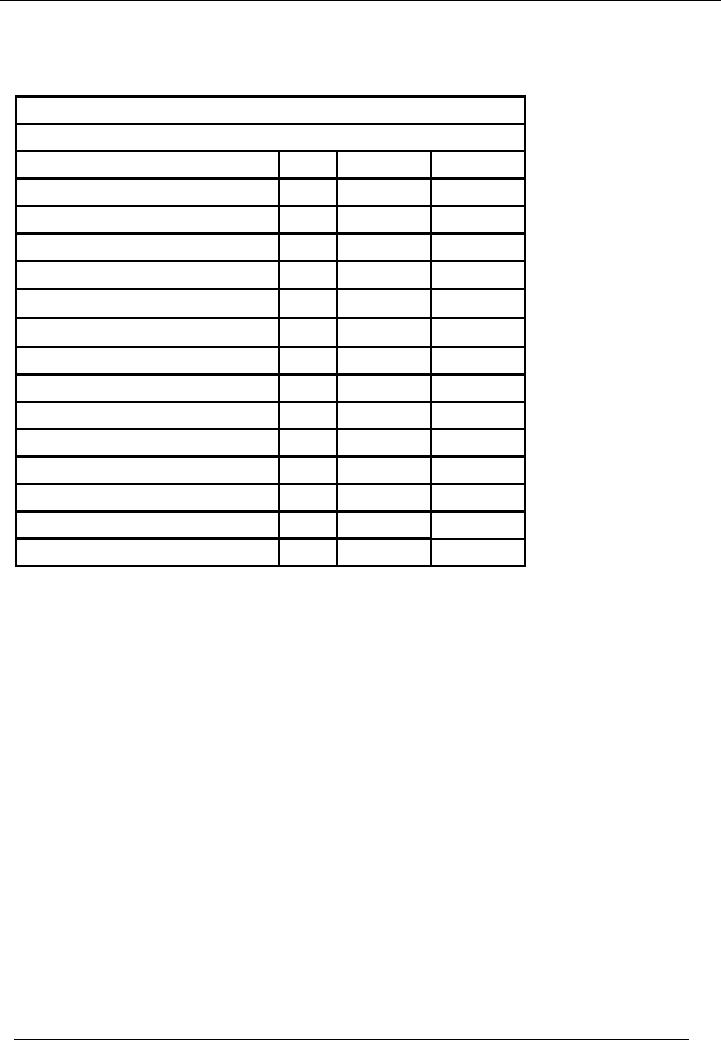
Financial
Accounting (Mgt-101)
VU
Illustration
Consider
the trial balance given
hereunder:
Saeed
& co.
Trial
Balance As On ( January 31,
2002)
Title
of Account
Code
Dr.
Rs.
Cr.
Rs.
Cash
Account
01
161,250
Capital
Account
02
150,000
Furniture
Account
03
2,000
Purchases
Account
04
16,000
Carriage
on purchase account
05
250
Salim&
co. (Creditor)
06
0
Sales
07
37,000
Usman
& co. (Debtor)
08
0
Salaries
09
2,500
sRent
10
3,000
Stationery
11
2,000
Utility
billst
12
5,000
Accrued
expenses
13
5,000
Total
192,000
192,000
89
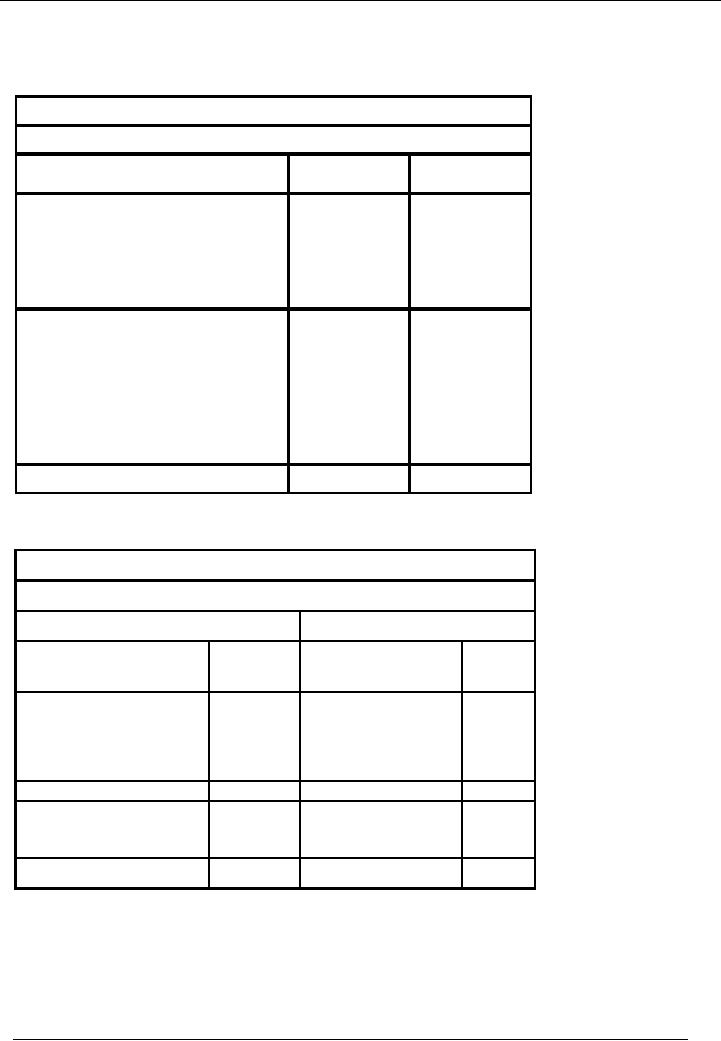
Financial
Accounting (Mgt-101)
VU
(This
trial balance is extracted
from the solved illustration, in
lecture 11)
Let's
say, the value of closing
stock at the end of the period is
Rs. 2,000. Then profit &
loss account will
bear
the
following change.
Saeed
& Co.
Profit &
Loss Account for the
period ended January 31,
2002
Particulars
Amount
Amount
Rs.
Rs.
37,000.
Income
/ Sales / Revenue (See
Note
16,250
2,000
(14,250)
#1)
Less:
Cost of Goods Sold
Closing
stock
Gross
Profit
22,750.
Less:
Admin. Expenses
(12,500)
(See
Note # 2)
Net
Profit/ (Loss)
10,250
Its
effect in the balance sheet is as
follows:
Saeed
& Co.
Balance
Sheet As At January 31,
2002
Liabilities
Assets
Particulars
Amount
Particulars
Amount
Rs.
Rs.
Capital
150,000
Fixed Assets
Profit and
Loss Account
10,250
Furniture
Account
2,000
160,250
Current
Liabilities
Current
Assets
Accrued
Expenses
5,000
Cash
161,250
Closing
Stock
2,000
Total
165,250
Total
165,250
This is a
practical demonstration of the treatment of closing
stock. But, we are not
mentioning the journal
entry
of closing stock at this stage. It
will be discussed in detail, when we will
study the topic of fixed
assets.
DEPRECIATION
Depreciation
is the method of charging cost of
fixed assets to the profit &
loss account as an
expense.
Fixed
Assets are those assets
which are:
90
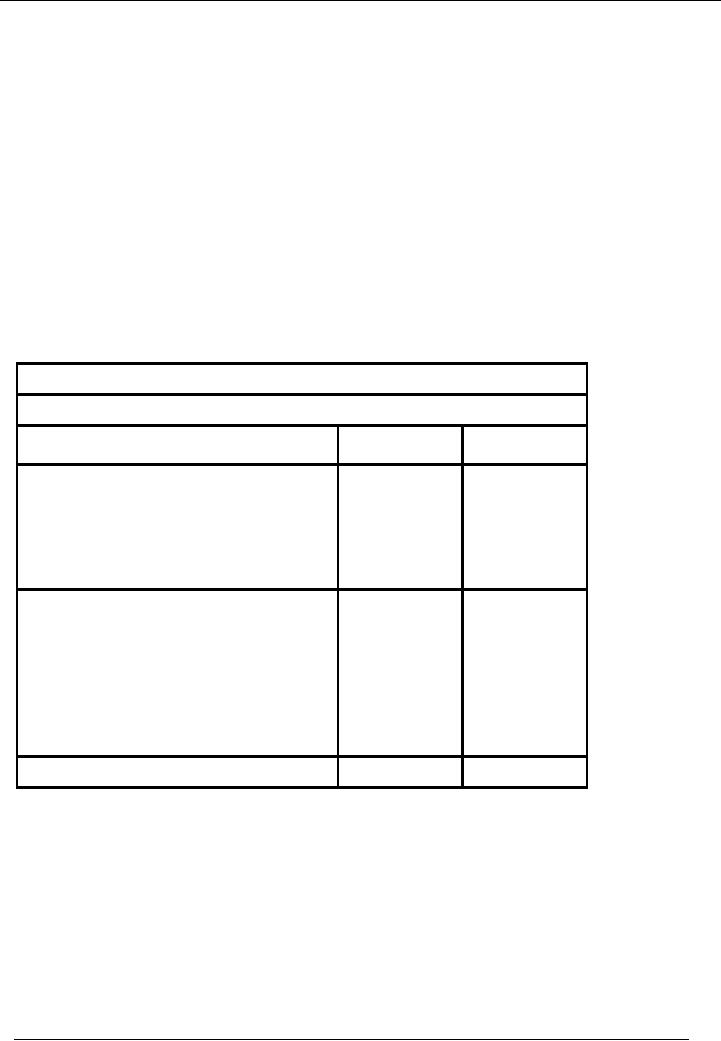
Financial
Accounting (Mgt-101)
VU
· Of
long life
· To be
used in the business
· Not
bought with the main purpose
of resale.
When
an expense is incurred, it is charged to
profit & loss account of the
same accounting period in
which it
has
incurred. Fixed assets are
used for longer period of time.
Now, the question is how to charge a
fixed
asset
to profit & loss account.
For this purpose, estimated
life of the asset is determined.
Estimated life is the
number of
years in which a fixed asset
is expected to be used. Then,
total cost of the asset is
divided by total
number of
estimated years. The value,
so determined, is called `depreciation
for that year' and is
charged to
profit
& loss account. The same
amount is deducted from total
cost of fixed asset. The net
amount (after
deducting
depreciation) is called ``Written Down
Value''.
For
instance, an asset has a
cost of Rs. 150,000. It is
expected to be used for ten
years. Depreciation to be
charged
to profit & loss account is
Rs. 15,000, i-e. cost of
asset/estimated life. In this case, it
will be
150,000/10
= 15,000.
That
is why depreciation is called an
accounting estimate.
To
understand its accounting
treatment, consider the above mentioned
illustration
Let's
suppose the useful life of
furniture is five years.
Then, depreciation for the year
will be (2,000/5 =
400).
Now,
the profit & loss account
will show the following
picture:
Saeed
& Co.
Profit &
Loss Account for the
year ended January 31,
2002
Particulars
Amount
Amount
Rs.
Rs.
37,000.
Income
/ Sales / Revenue (See Note
#1)
Less:
Cost of Goods
Sold
(16,250)
Gross
Profit
20,750.
Less:
Admin. Expenses + Depreciation
12,500
+ 400
(12,900)
Net
Profit/ (Loss)
9,850
Balance
sheet will look like
this:
91
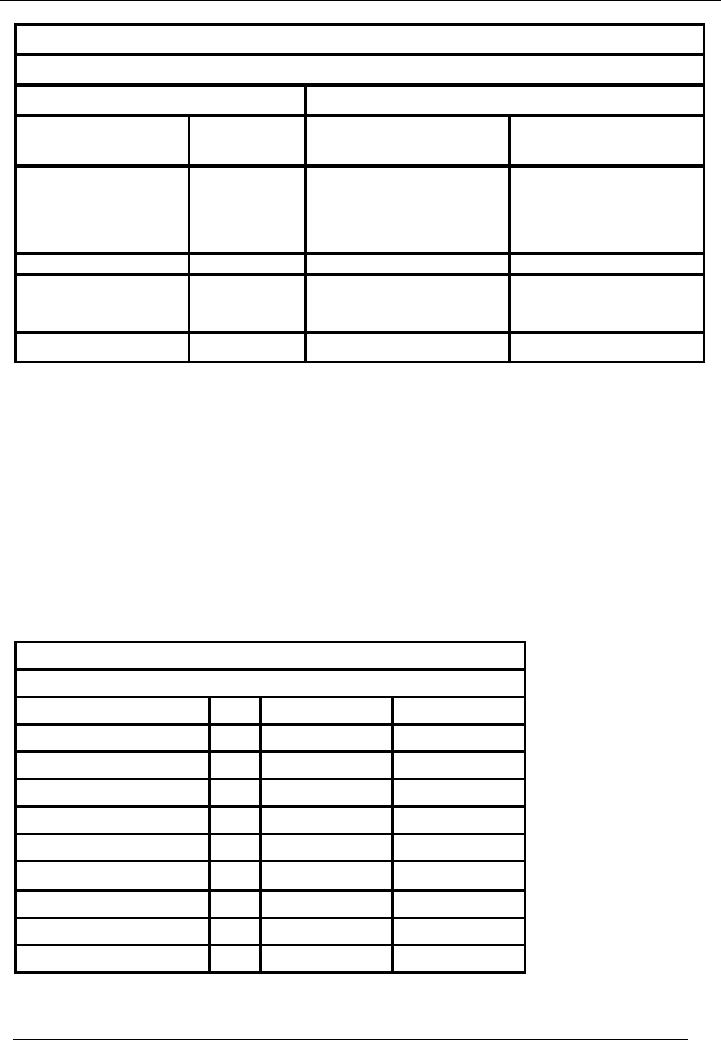
Financial
Accounting (Mgt-101)
VU
Saeed
& Sons
Balance
Sheet As At January 31,
2002
Liabilities
Assets
Particulars
Amount
Particulars
Amount
Rs.
Rs.
Capital
150,000
Fixed Assets
Profit and
Loss Account
9,850
Furniture
Account
2,000
Less:
depreciation
(400)
159,850
1,600
Current
Liabilities
Current
Assets
Accrued
Expenses
5,000
Cash
161,250
Closing
Stock
2,000
Total
164,850
Total
164,850
Treatment of
depreciation is practically demonstrated at this
point. Its journal entry
will be discussed in
detail, when we
cover the topic `Fixed
Assets'.
DRAWING
Capital is the
cash or kind invested by the owner of the
business. Sometimes, the owner wants to
take cash
or
kind out of the business for
personal use. This is known as
drawing.
Any money taken out as
drawings
will reduce
capital.
The
capital account is very important
account. To stop it getting full of
small details, cash items of
drawings
are
not entered in the capital
account. Instead, a drawing account is
opened, and all transactions
are entered
there.
Sometimes
goods are also taken by the
owner of the business. These are
also known as
drawings.
To
understand the accounting treatment of
drawings, look into the
following trial
balance:
Saeed
& co.
Trial
Balance As On ( January 31,
2002)
Title
of Account
Code
Dr.
Rs.
Cr.
Rs.
Cash
Account
01
161,250
Capital
Account
02
160,000
Furniture
Account
03
2,000
Drawings
04
10,000
Profit
& loss account
05
8,250
Salim&
co. (Creditor)
06
0
Usman
& co. (Debtor)
07
0
Accrued
expenses
08
5,000
Total
173,250
173,250
BALANCE
SHEET
92
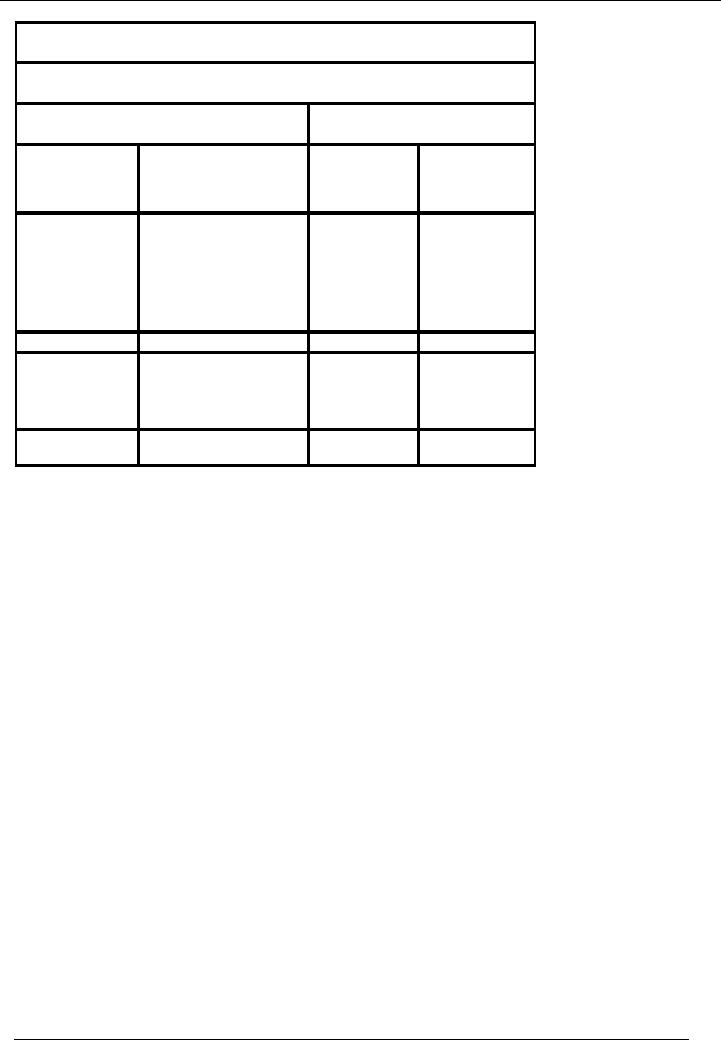
Financial
Accounting (Mgt-101)
VU
Saeed
& Sons
Balance
Sheet As At January 31,
2002
Liabilities
Assets
Particulars
Amount
Particulars
Amount
Rs.
Rs.
Capital
160,000
Fixed
Assets
Profit and
Loss
8,250
Furniture
2,000
Account
(10,000)
Account
Less:
Drawings
158,250
Current
Current
Liabilities
5,000
Assets
161,250
Accrued
Expenses
Cash
Total
163,250
Total
163,250
93
Table of Contents:
- Introduction to Financial Accounting
- Basic Concepts of Business: capital, profit, budget
- Cash Accounting and Accrual Accounting
- Business entity, Single and double entry book-keeping, Debit and Credit
- Rules of Debit and Credit for Assets, Liabilities, Income and Expenses
- flow of transactions, books of accounts, General Ledger balance
- Cash book and bank book, Accounting Period, Trial Balance and its limitations
- Profit & Loss account from trial balance, Receipt & Payment, Income & Expenditure and Profit & Loss account
- Assets and Liabilities, Balance Sheet from trial balance
- Sample Transactions of a Company
- Sample Accounts of a Company
- THE ACCOUNTING EQUATION
- types of vouchers, Carrying forward the balance of an account
- ILLUSTRATIONS: Ccarrying Forward of Balances
- Opening Stock, Closing Stock
- COST OF GOODS SOLD STATEMENT
- DEPRECIATION
- GROUPINGS OF FIXED ASSETS
- CAPITAL WORK IN PROGRESS 1
- CAPITAL WORK IN PROGRESS 2
- REVALUATION OF FIXED ASSETS
- Banking transactions, Bank reconciliation statements
- RECAP
- Accounting Examples with Solutions
- RECORDING OF PROVISION FOR BAD DEBTS
- SUBSIDIARY BOOKS
- A PERSON IS BOTH DEBTOR AND CREDITOR
- RECTIFICATION OF ERROR
- STANDARD FORMAT OF PROFIT & LOSS ACCOUNT
- STANDARD FORMAT OF BALANCE SHEET
- DIFFERENT BUSINESS ENTITIES: Commercial, Non-commercial organizations
- SOLE PROPRIETORSHIP
- Financial Statements Of Manufacturing Concern
- Financial Statements of Partnership firms
- INTEREST ON CAPITAL AND DRAWINGS
- DISADVANTAGES OF A PARTNERSHIP FIRM
- SHARE CAPITAL
- STATEMENT OF CHANGES IN EQUITY
- Financial Statements of Limited Companies
- Financial Statements of Limited Companies
- CASH FLOW STATEMENT 1
- CASH FLOW STATEMENT 2
- FINANCIAL STATEMENTS OF LISTED, QUOTED COMPANIES
- FINANCIAL STATEMENTS OF LISTED COMPANIES
- FINANCIAL STATEMENTS OF LISTED COMPANIES